As the skies teem with more unmanned aircraft, adherence to Safety Guidelines for Drone Pilots becomes imperative. The escalation in drone usage by enthusiastic hobbyists and dedicated professionals alike necessitates an unwavering commitment to safety and responsibility. It is not merely about the thrill of flight; it’s also about ensuring that each ascent into the ether is underpinned by rigorous unmanned aircraft safety recommendations. By integrating comprehensive drone flying safety tips into every flight plan, pilots can guarantee harmonious coexistence with both their environment and the community at large.
Comprehending and executing UAV operator safety rules is essential for minimizing risks and steering clear of legal pitfalls. The fundamental safety measures span a spectrum of prerequisites: from mastering the drone’s capabilities and staying abreast of local regulations to assessing weather implications and valuing privacy. This safety-conscious mindset is indispensable for establishing a balance between the passion for aeronautics and the obligation towards the safety of others and the sanctity of the environment.
Understanding Your Drone’s Capabilities
To leverage the full potential of drone technology, pilots must gain a comprehensive understanding of their aircraft’s capabilities. Adherence to drone safety protocol begins with knowledge of your UAV’s functionalities and extends to the ways you practice drone operations. Learning to operate your drone safely doesn’t just prevent accidents—it also ensures you’re ready for more advanced flying conditions. Be sure to internalize the drone operation safety guidelines to elevate your piloting skills.
Familiarize with Features and Functions
Every drone pilot’s journey starts with a solid grasp of their drone’s features and functions. The path to mastery begins with diligent study of the owner’s manual, complemented by video tutorials and community forums. Knowledge of the drone’s range, camera capabilities, flight controls, and battery life is crucial. Drones possess varying levels of sophistication, from GPS stabilization to obstacle avoidance systems, so understanding these elements is essential for safe flight.
Practice in Safe Environments
Safe and controlled environments serve as the perfect arenas for pilots to fine-tune their skills. Practice sessions are vital for becoming proficient with your UAV’s controls and response to command inputs. Repetition in a risk-free zone fosters confidence, enhances muscle memory, and prepares you to handle your drone in less predictable outdoor scenarios.
Regular Maintenance and Pre-flight Checks
Regular maintenance is critical to ensure your drone is airworthy. A diligent pre-flight process includes checking propellers for damage, ensuring firmware is up to date, and verifying that the battery is charged and correctly inserted. Inspect your drone’s sensors and camera for clarity and confirm the home point has been recorded to prevent loss of your drone. These proactive steps form the cornerstone of a safe flying experience.
| Checklist Item | Description | Frequency |
|---|---|---|
| Propeller Inspection | Check for cracks or bends | Before each flight |
| Firmware Update | Ensure the latest software is installed | Monthly or after update releases |
| Battery Check | Verify the charge and inspect for damage | Before each flight |
| Sensor Calibration | Ensure accurate readings for GPS and IMU | Periodically or when the drone behaves unexpectedly |
| Camera Test | Check for lens clarity and functionality | Before each flight |
Safety Guidelines for Drone Pilots
For both novice and seasoned quadcopter pilots, adherence to safety measures is non-negotiable. Operating an aerial drone goes beyond mere flying; it encompasses a comprehensive understanding of drone safety protocols and the implementation of aerial drone best practices. Amongst the most critical actions a pilot can take is to ensure they only undertake maneuvers within their range of expertise to prevent accidents and incidents.
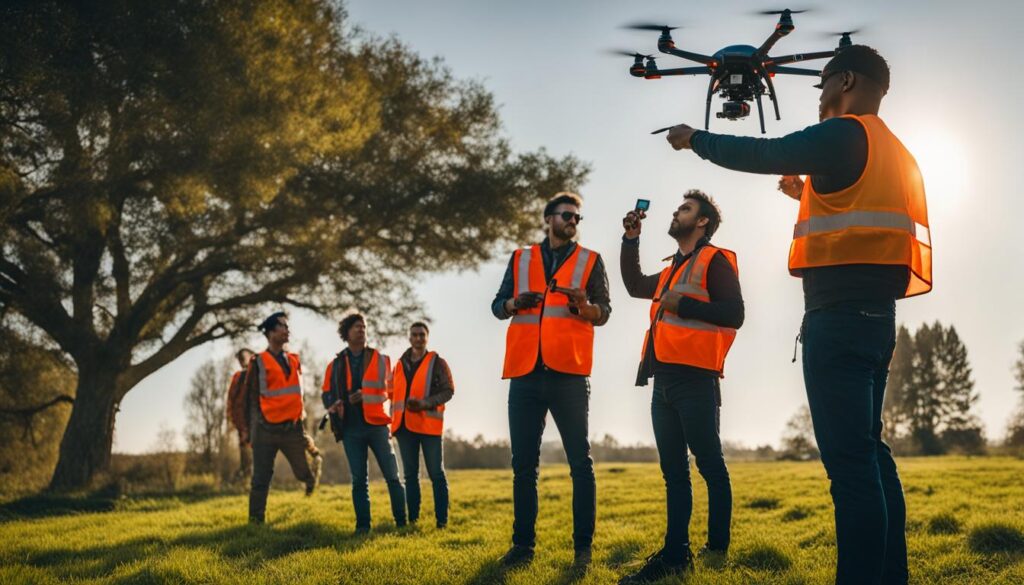
Successful quadcopter pilot safety measures also involve respecting privacy and securing necessary permissions. The table below outlines some of the essential actions to consider before and during flight. Every pilot should reference these points as part of their pre-flight routine to uphold safety and responsibility in the skies.
| Action | Importance | Best Practice |
|---|---|---|
| Pre-flight Risk Assessment | Minimizes potential hazards | Conduct a thorough check of the operational environment |
| Securing Permissions | Prevents legal issues over private property | Obtain consent before flying over private spaces |
| Avoid Sensitive Zones | Ensures safe distance from airports and wildlife preserves | Adhere to no-fly zones and restricted areas |
| Respect Privacy | Maintains ethical standards | Do not record individuals without express consent |
| Community Engagement | Enhances knowledge and safety practices | Participate in drone forums and local meetups |
Engagement with a community of drone enthusiasts and professionals serves as a catalyst for improving safety protocols. Through shared experiences and insights, pilots can enrich their understanding and execution of drone safety protocol, ultimately fostering a culture of aerial drone best practices within the larger piloting community.
Navigating Legal Requirements for Drone Operation
As the airspace becomes increasingly populated with drones, understanding the complexities of FAA drone licensing requirements, the drone registration process, and UAV operator safety rules is essential for both novice and experienced drone enthusiasts. Compliance with these regulations is not just about following the law; it correlates directly to the safety and respect of our shared skies.
Know the Difference: Recreational vs. Commercial Drone Use
What separates a recreational flyer from a commercial UAV operator? It’s more than just the intent behind the flight. Recreational users are often hobbyists who fly drones for personal enjoyment. In contrast, commercial operators utilize drones for business purposes, which could include aerial photography, surveying, or crop monitoring. The FAA mandates distinct guidelines for each category to ensure a structured approach to airspace management.
Registration and Licensing Processes
All drones weighing more than 250 grams must undergo a drone registration process to be compliant with FAA regulations. Recreational flyers must also pass the Recreational UAS Safety Test (TRUST), which underscores basic safety protocols and flying principles. For commercial operations, getting a Remote Pilot Certificate is a critical step that involves passing an aeronautical knowledge exam and meeting other FAA criteria.
Understanding Airspace Classifications and Restrictions
When flying a drone, being aware of the airspace it navigates is key. The FAA delineates the sky into various classes, each with its own set of rules. Drones are generally allowed in Class G airspace without air traffic control permission, while flying in Classes B, C, D, and E requires specific clearance. To assist pilots in recognizing airspace restrictions, the FAA offers the B4UFLY app – an essential tool for every UAV operator.
For both hobbyists looking to take their drone out for a leisurely spin and professionals embarking on a commercial venture, abiding by these regulations will not only ensure legality but will also contribute to the overall safety and security of everyone sharing the sky.
Weather Considerations for Drone Flights
The proficiency of a UAV operator in assessing prevailing weather conditions is indispensable for safe drone handling during adverse weather. It is advised that pilots factor in comprehensive drone flying safety tips into their pre-flight planning to offset any potential risks posed by the elements. Crucial to sustaining flight stability and safety is the pilot’s ability to conduct thorough UAV operator weather assessment.
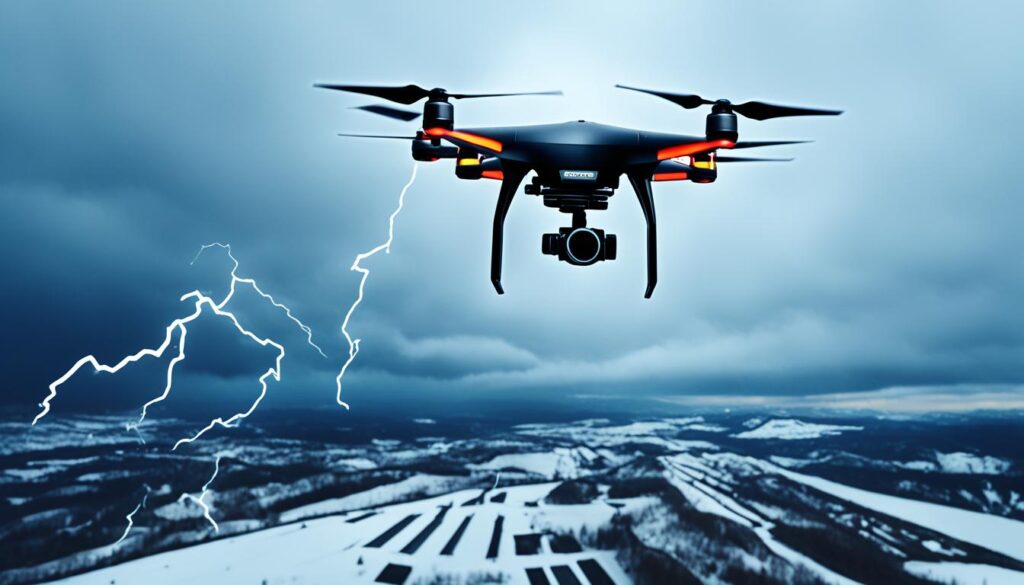
Understanding the dynamics between drones and weather implications is key. Here is an insightful breakdown:
- Wind: Drones can be highly sensitive to wind gusts. Assess wind speed not just at surface level, but also at the proposed flying altitude.
- Precipitation: Rain or snow can damage the electronic components of a drone and impair visibility. Flights in these conditions should be avoided.
- Temperature: Extremely cold or hot temperatures can affect battery performance, leading to reduced flying time and potential loss of control.
- Fog: It can not only reduce visibility but also pose condensation risks to your drone’s motors and electronics.
- Lighting Conditions: Adequate lighting is essential for monitoring your drone; it is preferred to fly in daylight or during permissible times in twilight with appropriate anti-collision lighting.
Pilots are encouraged to continuously observe the skies and be prepared to make real-time decisions. If unexpected weather phenomena arise, erring on the side of caution is the mantra for safe drone handling during adverse weather. Swiftly landing the drone at the first sign of hazardous weather could mean the difference between a successful flight and a costly mishap.
Always remember that environmental stewardship and safety are paramount. As a UAV operator, it’s your responsibility to ensure that each flight adheres to the safest operational standards in regard to weather conditions.
Maintaining Visual Line of Sight
For drone pilots, ensuring the ability to maintain visual contact with their unmanned aircraft is more than a best practice—it’s an essential aspect of secure UAV observations. Visual Line of Sight (VLOS) is not just a key safety measure; it’s a fundamental requirement of drone operation. Let’s delve into the reasons why this is paramount for every flight and discover strategies to keep your drone within your line of sight at all times.
Why Keeping Your Drone in Sight is Crucial
The VLOS importance for drone pilots is multifaceted, impacting safety, compliance, and the overall control of the operation. It allows for real-time decision making and swift action should any unexpected situations arise. This vigilance is especially critical in avoiding collisions with other aircraft, obstacles, or even birds, which can lead to significant damage or incidents. Moreover, maintaining visual line of sight is a clear stipulation by aviation authorities, including the FAA, to enhance the safe coexistence of drones with other airspace users.
Tips for Effective Visual Monitoring
Keeping your drone within your eyesight requires more than just good intentions; it requires technique and diligence. Here are some practical tips for effective visual monitoring:
- Choose an open area for flying, free from visual obstructions like buildings or trees.
- Use high-visibility markings or LED lights to increase the visibility of your drone against the sky.
- Employ a spotter or visual observer who can assist in maintaining line of sight when necessary.
- Stay aware of the sun’s position to avoid being blinded and losing sight of your UAV.
- Limit the distance of flights based on conditions and personal visual capabilities.
Remember, responsible drone operation hinges on the ability to maintain visual contact at all times. It’s not only about navigating safely but also about safeguarding the airspace for everyone.
| Aspect of VLOS | Importance | Tips for Adherence |
|---|---|---|
| Real-Time Control | Immediate manual responses are enabled by direct sight. | Practice consistent scanning of the drone’s surroundings. |
| Obstacle Avoidance | Keeps the drone safe from collisions. | Train to understand your drone’s dimensions and agility. |
| Legal Compliance | Mandatory by regulations to prevent fines or legal issues. | Stay updated on local UAV laws and amendments. |
| Airspace Safety | Protects the integrity of shared airspace. | Use apps and devices to monitor nearby aerial traffic. |
By prioritizing VLOS during flights, drone pilots contribute to the safe and respected integration of UAVs in our skies. While technology continues to advance, the basic premise of maintaining visual contact remains a staple of responsible drone flight and operation.
Responsible Drone Piloting and Public Safety
In the era of rapidly expanding drone technology, protecting the sanctity of public spaces has never been more crucial. Responsible drone operators are key players in maintaining this balance, as the surge in unmanned aircraft creates novel challenges for privacy and security in drone operations. It’s our collective duty to ensure that while these devices fly high, our ethical standards for drone safety in populated areas soar even higher.
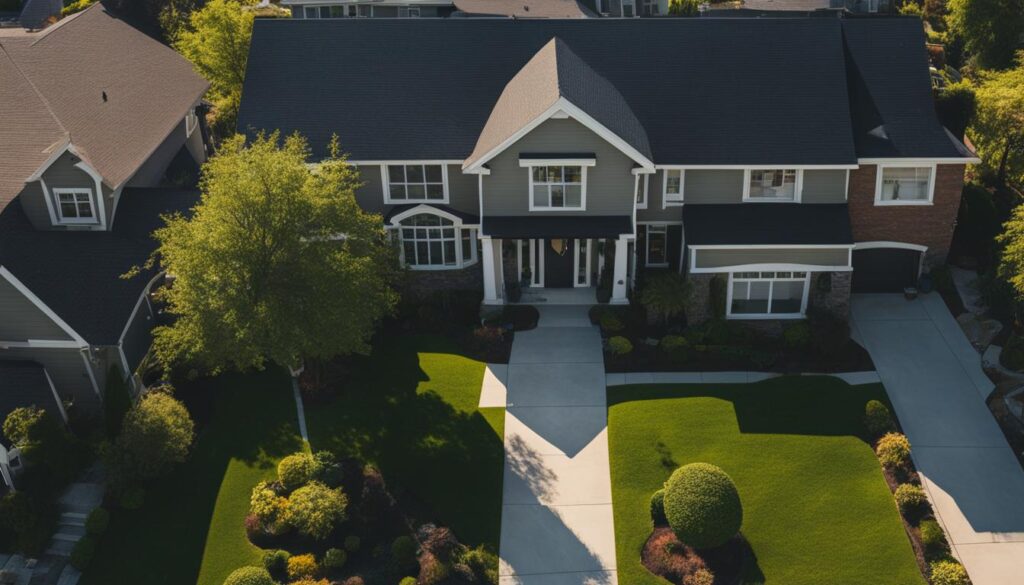
Flying with Consideration of People and Property
When drones take flight, the world beneath them should not be brushed aside. Diligence is required to protect the unsuspecting public and their properties. This not only involves upholding safety distances from individuals and structures but also requires pilots to practice ethical unmanned aircraft handling by refraining from flying over congested groups or engaging in potentially hazardous maneuvers from moving vehicles in populated regions.
Adhering to Privacy Norms and Ethical Practices
As the sky becomes a bustling highway for drones, respecting individual privacy rights is paramount. Pilots must commit to gaining consent before capturing images or videos of people, thus upholding a trust within society that their presence will not infringe on the privacy and security in drone operations. By strictly adhering to these ethical norms and practices, drone operators can play a pivotal role in harmonizing technology with societal values.
Aerial Drone Best Practices
To ensure the highest standards of safety and regulation compliance in drone operation, it’s essential for pilots to adhere to definitive drone operation safety guidelines. Among these, comprehensive drone preflight inspections are paramount. This process ensures that every flight begins with a thorough review of the aircraft’s condition, reducing the risk of mid-air failures.
Beyond a meticulous preflight routine, pilots must also remember to carry proof of registration and successful completion of the necessary tests. Although often overlooked, this formality is a critical element of drone safety preparedness and should be a non-negotiable aspect of an operator’s checklist.
| Best Practice | Details | Impact on Safety |
|---|---|---|
| Flying at mandated altitude | Adhering strictly to altitude restrictions | Minimizes risks of collisions with manned aircraft |
| Avoiding hazards | Steering clear of emergency response scenes to prevent interference with operations | Enhances effectiveness of emergency services and maintains airspace safety |
| Sober Operation | Not flying under the influence of drugs or alcohol | Ensures pilot focus and responsiveness |
| Visible Registration Numbers | Placement of registration numbers on the drone as required by law | Aids in identification and accountability |
Engaging in these aerial drone best practices does more than comply with regulations; it fosters a culture rooted deeply in the safety and well-being of both the drone piloting community and the public at large. Along with these measures, recommending the implementation of a solid drone safety protocol is an equally crucial component of responsible drone operation.
By embracing these practices, drone pilots not only protect their rights to fly but also endorse the responsibility that comes with the freedom of the skies. The thrust toward a safer sky is collaborative, demanding each pilot’s commitment to these guidelines for the broader realization of a secure aerial environment.
Emergency Procedures and Risk Management
In the world of UAV operations, preparedness for any potential emergency scenario is not just beneficial, it’s essential. Effective risk management for drone pilots means establishing and following a set of UAV safety crisis procedures designed to combat unforeseen difficulties. We’re delving into the procedural necessities that will give drone operators the upper hand when handling unpredictable events such as technical malfunctions or abrupt environmental changes.
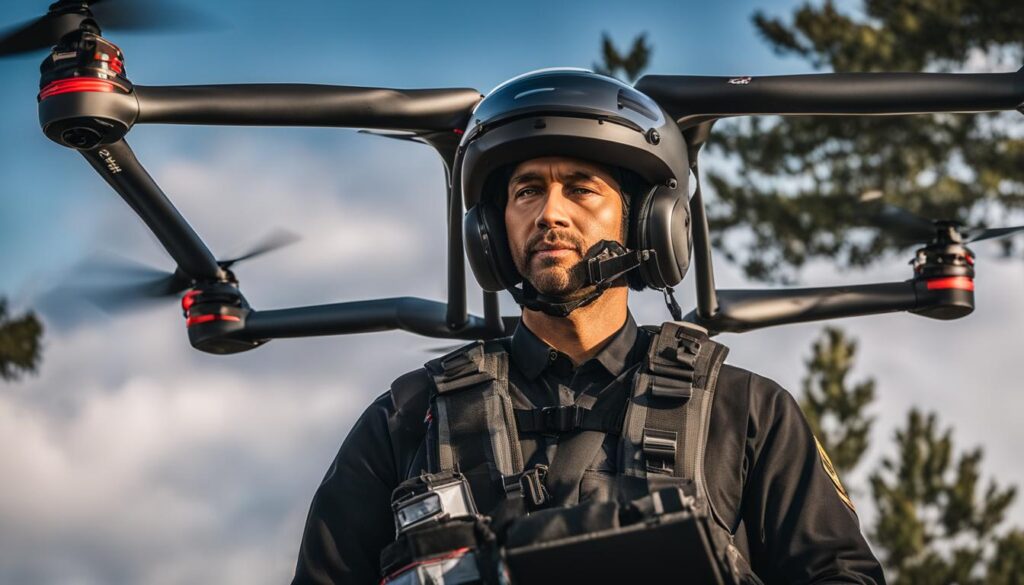
Handling Unexpected Situations
Unexpected situations can arise at any moment during a drone flight, ranging from equipment failure to sudden gusts of wind. Successful emergency drone handling requires a proactive approach. Simplifying the complexity of these situations, the following guidelines offer feasible steps for when circumstances deviate from the norm:
- Keep calm and maintain perspective to assess the situation accurately.
- Initiate an emergency landing protocol if the situation worsens or persists.
- Use built-in safety features, such as Return-to-Home (RTH), if available.
- Prepare a secondary landing zone ahead of flight as part of your flight plan.
Essential Risk Mitigation Techniques
Risk mitigation is the stronghold of preventive strategies that ensure safety before, during, and after flights. To manage risks effectively, UAV safety crisis procedures should be well-practiced and second-nature. The following techniques should be incorporated into every drone pilot’s standard operating procedures:
- Thorough pre-flight checks, including hardware, software, and signal integrity.
- Continuous monitoring of weather conditions and flight environment.
- Familiarization with emergency procedures for various types of drone failures.
- Engagement in regular training sessions to keep skills sharp and updated.
By embedding risk assessment into the heart of your preparation and flight processes, you solidify a safety-centric mindset that is critical in the increasingly regulated airspace. When drone pilots adopt comprehensive emergency procedures and risk management strategies, they not only protect their investment but also ensure the safety and trust of the communities and environments in which they operate.
Enhancing Skills through Community and Training
The path to mastery in any field is often marked by a commitment to continuous aviation learning, where the evolving nature of drone technology demands that pilots perpetually hone their craft. One of the most effective ways to facilitate quadcopter skill improvement is through active drone community engagement. Collaborating with fellow enthusiasts and professionals not only spurs individual expertise but collectively raises the bar for operational safety and efficiency in the field.
For drone pilots, a diverse array of resources exists to support skill advancement and safety awareness. Online discussion forums, social media groups, and local club meetings are fertile grounds for exchange and learning. In such environments, both rookies and veterans are encouraged to share experiences, troubleshoot issues, and showcase their piloting prowess; a synergy that sparks innovation and collective problem-solving.
- Training programs offered by established institutions and flight schools.
- Simulation software that mirrors real-world flying conditions.
- Webinars and online courses covering new regulations and emerging trends.
- Competitions and challenges that incentivize skill sharpening and creativity.
Moreover, many drone pilots turn to official certification courses to not only abide by regulations but also to refine their understanding of airspace management, weather systems, and UAV maintenance. Dedicated practice through such structured learning avenues equips pilots with the knowledge to maneuver through complex situations confidently and responsibly.
Community engagement equates to a support system that propels pilots towards achieving their full potential, ensuring the safety and pleasure of flight are accessible for all involved in this thrilling activity.
Ultimately, an atmosphere of continuous skill enhancement driven by passionate community participation and rich training resources significantly augments the standards of safety and capability within the drone industry.
Conclusion
Summarizing key aspects of drone safety, we are reminded of the intricate balance between mastering technical prowess and adhering to ethical guidelines. Each element—from knowing your unmanned aircraft’s capabilities to practicing stringent safety protocols—plays a pivotal role in ensuring UAV operations are carried out responsibly. For drone pilots, the journey doesn’t end at liftoff; it propels forward with a commitment to constant learning and regulatory compliance.
Summarizing Key Takeaways for Drone Safety
In the arena of UAV operation, pilots must exhibit proficiency in understanding their drone’s features, be astute in charting out pre-flight strategies, and show agility in adapting to changing weather conditions. Maintaining visual line of sight and respecting public space and privacy are not mere guidelines, but foundations for responsible piloting. Above all, each flight should be a testament to a pilot’s preparedness and respect for the craft and community.
Continuous Learning and Adherence to Safety Protocols
Continuous education and strict adherence to drone flying safety tips are the cornerstones of sound UAV operation. By engaging in ongoing training and community discourse, pilots enhance their safety knowledge and operational skills. It is through this unwavering dedication to safe drone operation conclusions and a commitment to excellence that the skies become a shared space for innovation, exploration, and responsibility.
FAQ
What are the essential safety guidelines for drone pilots?
Essential safety guidelines for drone pilots include understanding your drone’s features, adhering to legal requirements, preparing for the impact of weather, maintaining visual line of sight during flight, operating with consideration for public safety and privacy, following best practices, being prepared with emergency procedures, and participating in community and training for skill enhancement.
How can I become familiar with my drone’s features and functions?
To become familiar with your drone’s features and functions, read the manual thoroughly, engage with online tutorials, practice in controlled environments, and learn how to address common issues such as controlling the drone, monitoring battery levels, calibrating sensors, and using safety features like the return-to-home function.
Why is regular maintenance and pre-flight checking important for drone safety?
Regular maintenance and pre-flight checks are important to ensure the drone is in good condition and to prevent malfunctions during operation. These checks include inspecting propellers, batteries, and sensors, as well as calibrating and testing the drone’s systems to ensure everything is working as intended.
What constitutes the difference between recreational and commercial drone use?
Recreational drone use is for personal enjoyment and does not include any commercial activity. FAA regulations for recreational use include drone registration, passing the Recreational UAS Safety Test (TRUST), and following flying guidelines. Commercial drone use involves using a drone for business purposes and requires a Remote Pilot Certificate, passing an aeronautical knowledge exam, and adhering to additional operational regulations.
What are the key airspace classifications and restrictions that drone pilots should understand?
Drone pilots should understand the different classes of airspace (Class A, B, C, D, E, and G), which dictate where they can fly. It’s vital to be aware of restricted areas, such as near airports and military zones, and use resources like the B4UFLY app to ensure compliance with airspace restrictions.
How do adverse weather conditions affect drone flight and safety?
Adverse weather conditions like strong winds, rain, snow, fog, or low light can affect a drone’s stability and performance, increasing the risk of accidents. Pilots should check weather forecasts before flights and be prepared to land or halt their operation if conditions worsen.
Why is maintaining visual line of sight (VLOS) important for drone operation?
Maintaining VLOS is crucial to navigate your drone safely, avoid obstacles, and monitor its position relative to people, property, and other aircraft. It complies with FAA regulations, which require keeping the drone in sight at all times during the flight.
What steps should drone pilots take to ensure public safety while operating their UAVs?
To ensure public safety, drone pilots should fly at safe distances from people and property, avoid flying over groups and moving vehicles, except in sparsely populated areas, and keep their UAVs from entering private property without permission. Additionally, avoid capturing images of individuals without their consent to respect privacy.
Can you share some best practices for safe drone operation?
Best practices for safe drone operation include conducting pre-flight inspections, having proof of registration and completion of safety tests, flying within altitude limits, avoiding areas of emergency response activities, not operating under the influence, and clearly displaying the drone’s registration number.
How should drone pilots handle unexpected situations and emergencies during flight?
In unexpected situations and emergencies, drone pilots should remain calm and follow established emergency procedures such as executing emergency landings or shutting down motors. Pilots should be prepared with plans for various scenarios and ensure thorough knowledge of their drone’s safety features.
What are the benefits of drone pilots engaging in community and training?
Engaging in the drone community and completing training programs offer pilots the opportunity to exchange tips, learn from others’ experiences, stay current with the latest technologies and safety protocols, and generally improve their piloting skills and safety knowledge through continuous learning and support.
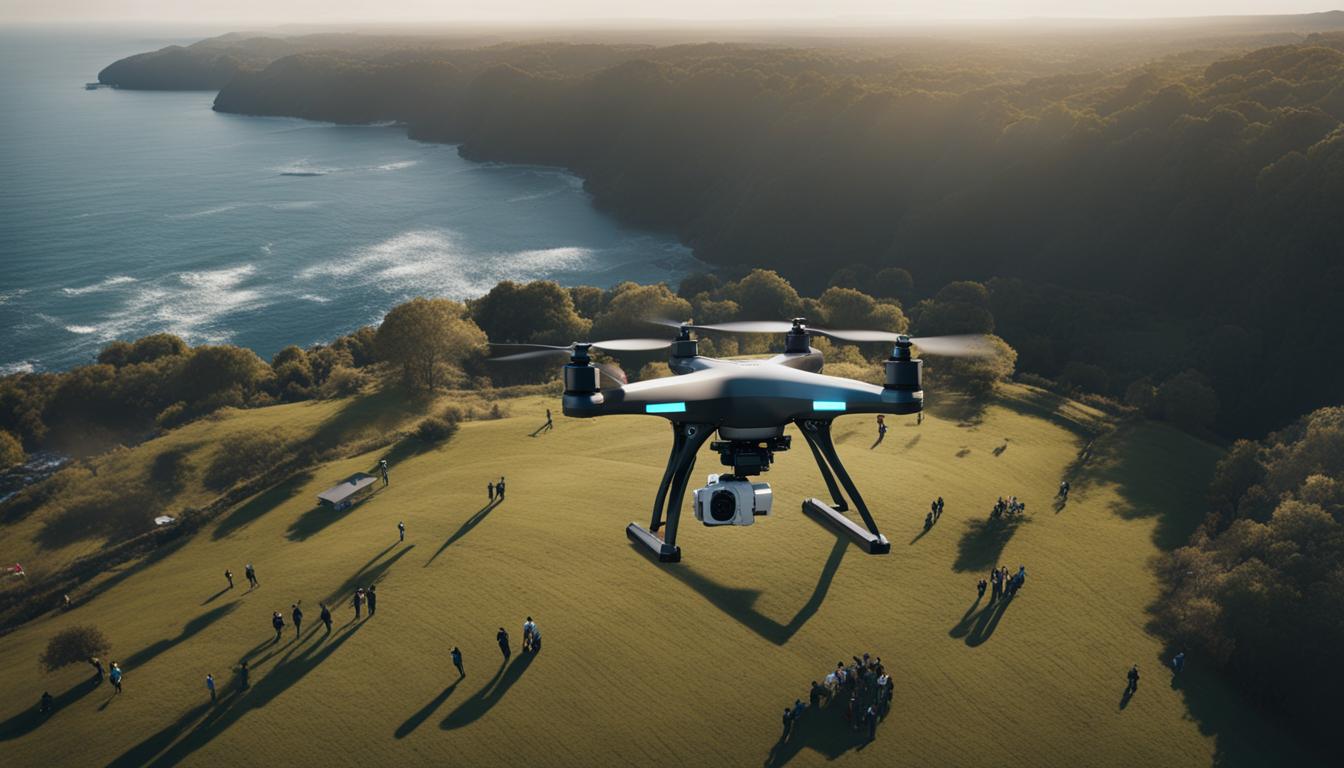
Leave a Reply